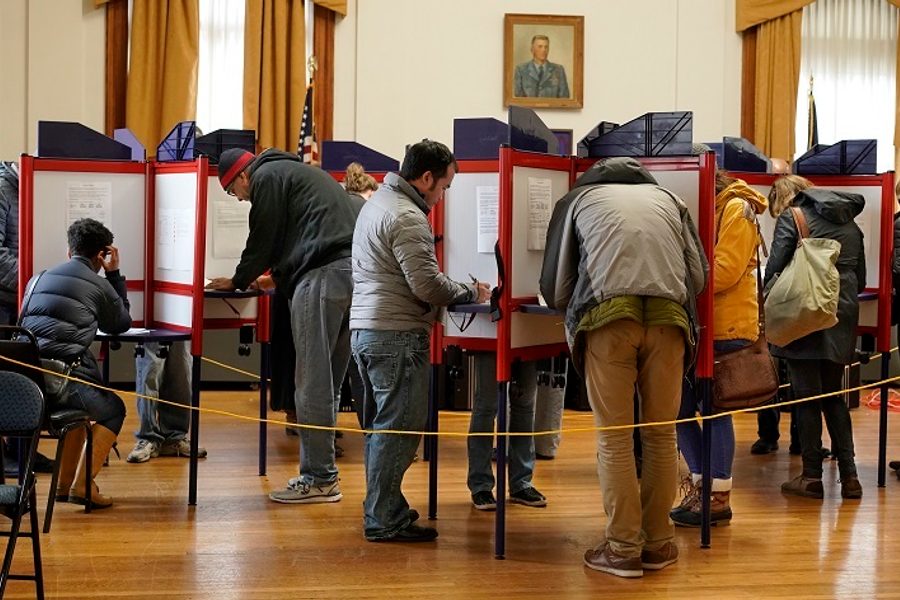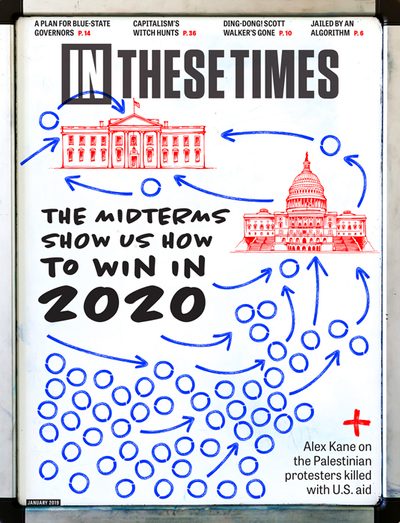Good Candidates Won’t Be Enough in 2020—We Must Overhaul Our Entire Voting System
There’s a growing national movement across party lines for multi-member districts and ranked-choice voting.
Rob Richie

My advice in the wake of the midterms I give as a strategist for democracy, not for Democrats or the Left. For any party or electoral group, it is the same: Earn the trust of the changing American electorate by passing better voting rules.
Last November, democracy itself was on the ballot: redistricting reform, voter access, voting methods, voting rights and campaign finance reform. And democracy won. Landslide majorities backed fairer elections in states both red and blue. The Democrats’ proposed first bill of the 2019 legislative session, HR 1, would take most of those changes national.
HR 1 is excellent, but insufficient. Millennials are fed up with the status quo, as shown by how many are registered as Independent and backed Bernie Sanders’ political revolution. A reform that can earn their votes is ranked-choice voting (RCV), which lets voters rank candidates and not be forced to choose “the lesser of two evils.” Already used in more than a dozen American cities, RCV had a big year in Maine. It was affirmed in a statewide ballot measure, used in the primaries and then to elect U.S. senators and House members for the first time in American history.
The RCV contest for U.S. Senate drew more votes than any midterm race ever in Maine. In Maine’s congressional races, the shares of votes going to third-party and independent candidates were higher than in all but one other House race with two major-party nominees (Utah’s 1st district).
In Maine’s 2nd congressional district — the most expensive congressional race in the state’s history—RCV was key to economic populist Democrat Jared Golden’s upset of Republican incumbent Bruce Poliquin. Golden’s 45.5 percent of first choices put him in second place, after the first choices were tallied. With RCV, the votes of the 8.2 percent who voted first for independent candidates made the difference; when your first choice is in last place, your ballot goes to your next ranked choice. Poliquin said he wouldn’t rank any other candidate second, while Golden and the two independent candidates embraced the new system and encouraged their voters to pick each other as back-up choices. He won 50.5 percent to 49.5 percent.
RCV has another application that could serve the Democrats well: the presidential nomination process. The Republicans’ big field in 2016 rewarded Donald Trump. Democrats should support RCV in early caucus states like Iowa and Nevada to turn the spotlight on candidates best able to represent the party. Democrats could make this change with a simple rule change approved by the DNC.
But RCV alone isn’t enough, either. Even in 2018, three in five House races were won by landslide margins of greater than 20 percentage points, and more than 150 Republicans won by at least 10 percentage points in a strongly Democratic year. FairVote’s Monopoly Politics report has already projected winners in more than 350 of the 435 congressional races in 2020. Nearly all those winners are in districts that wouldn’t be much more competitive with impartial redistricting. That means more than a third of Americans, including most African Americans in the South, live in safely Republican districts that are unlikely to ever elect a Democrat.
In today’s highly partisan climate, the core problem is the winner-take-all rule where 51 percent of votes gains 100 percent of power. Electoral organizing is impossible to sustain when you have no chance to win. Take Richard Ojeda, the populist progressive who earned 44 percent of the vote in a West Virginia district that Trump overwhelmingly carried in 2016. Ojeda’s performance was impressive, but still well be- hind what was needed. Nationally, expect less energy in such districts in 2020, not more.
Yet Congress could change this equation overnight. The New York Times in a full-page editorial recently embraced HR 3057, the Fair Representation Act. HR 3057 combines RCV with what is known as multi-member districts — that is, putting together adjoining districts and electing more than one person using RCV. In such a system, 51 percent of the votes will win the most seats, but not all: Any 20 percent group of like-minded voters will be able to elect one out of five officials.
Suddenly, every single vote in the nation would count in every election, from West Virginia coal country to the Texas panhandle. The Left could organize literally everywhere, and far more women and people of color would likely win elections.
Democrats face a particular geographic challenge with winner-take-all: Their votes have become too concentrated in urban areas. While gerrymandering matters, Democrats aren’t as efficiently distributed as Republicans across large regions of the country. As a result, there is a built-in partisan skew within any winner-take-all system.
So, Democrats, respect the vote. Pass voting rights protections, campaign finance reform, the National Popular Vote plan and impartial redistricting, to be sure, but also pass RCV everywhere you can. Build support for the Fair Representation Act and show Americans you’re truly ready to embrace fairness, choice and a truly representative democracy.








